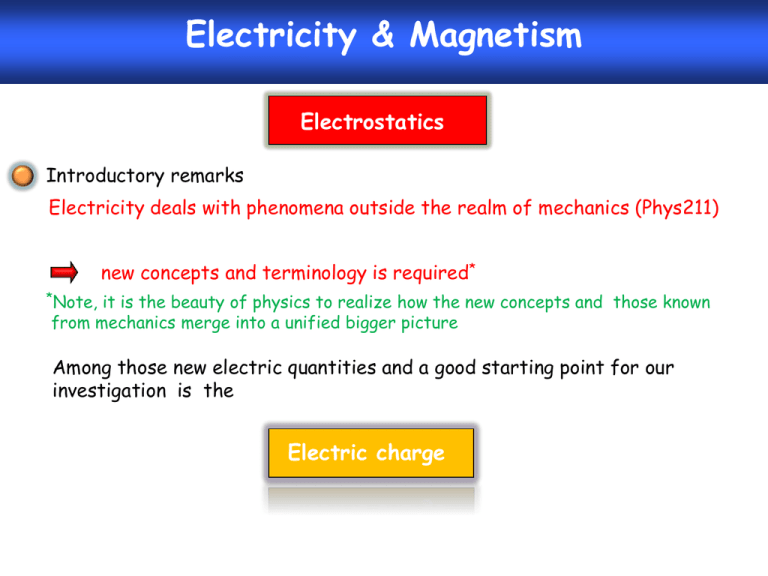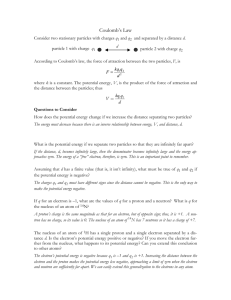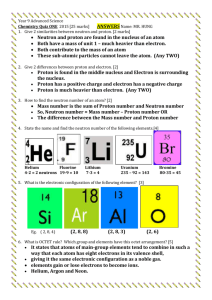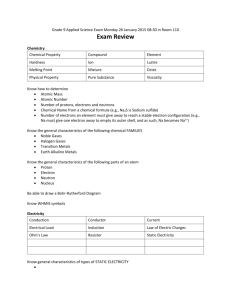Introduction and Electric charges
advertisement

Electricity & Magnetism Electrostatics Introductory remarks Electricity deals with phenomena outside the realm of mechanics (Phys211) new concepts and terminology is required* *Note, it is the beauty of physics to realize how the new concepts and those known from mechanics merge into a unified bigger picture Among those new electric quantities and a good starting point for our investigation is the Electric charge Electric charge Greek word elektron =amber electric Where is the connection between amber and electricity The Greek discovered 600 B.C. Rubbing amber against fur of a cat, dead or alive Note, if you repeat the experiment, do not kill a cat, a plastic fur works just fine! Today we say: amber has acquired a net electric charge Let’s do similar experiments and draw some conclusions Our experiments and numerous others show The harmonic approximation There are exactly 2 kinds of charge. According to Benjamin Franklin we call them positive and negative charge Two positive charges or two negative charges repel each other A positive charge and a negative charge attract each other The electroscope is a device that allows to determine the amount of charge Clicker question When two identical socks are removed from a clothes dryer, they will usually 1) repel each other 2) cling to each other 3) no way to predict Clicker question Do you have access to MasteringPhysics A) Yes B) No C) No, but I am confident to get it from by Thursday Electric charge and the structure of matter The standard model of elementary particles Electricity, atomic forces, binding, optics, … Quark binding in nuclear particles Radioactive β-decay (Weak nuclear) http://en.wikipedia.org/wiki/File:Standard_Model_of_Elementary_Particles.svg Note, gravity not included in this scheme Positively charged protons and neutral neutrons build nucleus Neutral atom Nucleus 10-15m Nucleus with n protons surrounded by same # n of electrons with negative charge 10-10m Note, figure very misleading regarding size ratio ! If an atom were a few km across, its nucleus would be the size of a tennis ball! If# of protons # of electrons ion Let’s consider the simple example H, H+, H+e-e=0 neutral Hydrogen (H) atom Proton with charge +e H+=proton remains + charged ion=cation Remove electron Electron with charge -e add electron H-=H+ extra electron - charged ion=anion Our experimental observations suggest: Electric charge is conserved Charge is not created or destroyed it can only be transferred from one body to another. Charge Q at time t1 Qin Q(t2)= Q(t1)+Qin-Qout Qout The magnitude of charge of the electron or proton is a natural unit of charge Every observable amount of charge is always a multiple of this unit. Final remark: Conservation laws in physics have always a fundamental and deep meaning In general: Conservation laws are the consequence of a symmetry (Noether theorem) Charge conservation follows from gauge invariance (way beyond the scope of this course) Clicker question Do we want to meet tomorrow for a recitation A) Yes, I pay a lot of tuition and want to get the most out of my investment. B) No, there is not much of a point, we have not covered enough material and I can spend my time more productive. C) Let’s meet, it is just fun to hang out with Dr. Binek.











